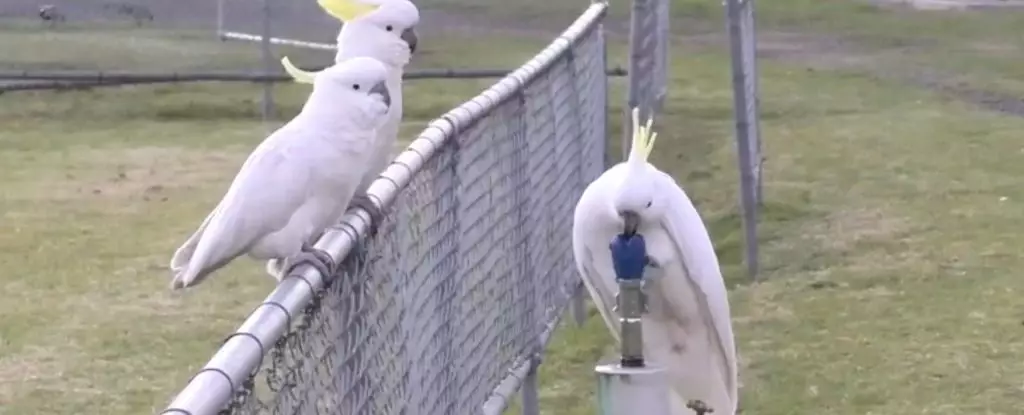In the vibrant suburb of Western Sydney, a remarkable phenomenon has emerged involving the sulfur-crested cockatoo (Cacatua galerita), a species known for its impressive intelligence. These birds have not only mastered the art of scavenging through rubbish bins but have now elevated their drinking habits to an extraordinary level by efficiently using park water fountains. This is more than just a clever act; it signifies a profound understanding of their environment and a remarkable ability to innovate.
Animal behavior researchers have long marveled at the capabilities of this avian species, but the recent discoveries reveal a dimension of their intelligence that is both intriguing and complex. Observations dating back to 2018 and 2019 showcased these cockatoos developing the skill to utilize twist-handle water fountains—a feat that requires a series of coordinated actions that humans often take for granted. The significance of this behavior surpasses mere survival; it demonstrates the birds’ adaptability and resourcefulness in urban settings, showcasing how wildlife can ingeniously negotiate the challenges posed by human infrastructure.
Research Insights: A Window Into Social Learning
Led by researcher Barbara Klump from the Max Planck Institute of Animal Behavior, a systematic study was conducted to explore this fascinating behavior. Over the course of 44 days, motion-triggered cameras captured the cockatoos’ numerous attempts to manipulate the fountain mechanism to obtain water. The findings are astounding; with 525 attempts documented and a 41 percent success rate, the cockatoos exhibited not only persistence but also an understanding of cause and effect.
Their comical yet strategic approach—using their feet, beaks, and body weight to engineer a stream of water—offers insightful evidence of their intelligence. Surprisingly, the birds weren’t just using the fountain on sweltering days, contrary to initial assumptions about their hydration needs; instead, they displayed habitual visits at dawn and dusk. This consistency suggests that the attraction to the fountain might be driven by factors beyond basic thirst, possibly hinting at social behaviors or even a preference for the perceived quality of water found in these human-placed amenities.
Cultural Implications: The Birth of a Local Tradition
What sets this behavior apart is its capacity to evolve into a social learning phenomenon. The notion that this practice has spread among local cockatoo populations indicates that these birds engage in cultural transmission, mirroring human-like societal traits. As they flock to the fountains in organized lines much like children waiting for their turn at a water cooler, it’s apparent that the act of drinking has encapsulated behavioral learning intertwined with social bonding.
These playful interactions underscore a deeper narrative about urban wildlife dynamics. Instead of viewing these clever cockatoos solely as pests or nuisances, it’s vital to appreciate their adaptability and intelligence as a bridge between nature and the often chaotic human environments they inhabit. Their antics at water fountains compel us to reconsider our relationship with wildlife and can inspire strategies for coexistence.
Thus, the sulfur-crested cockatoo not only serves as a testament to the cleverness of animal behavior but challenges us to recognize the enrichment of our ecosystems. Their dance around the drinking fountain is not merely a survival tactic; it is a vibrant expression of adaptation, intelligence, and community that deserves our admiration.


Leave a Reply